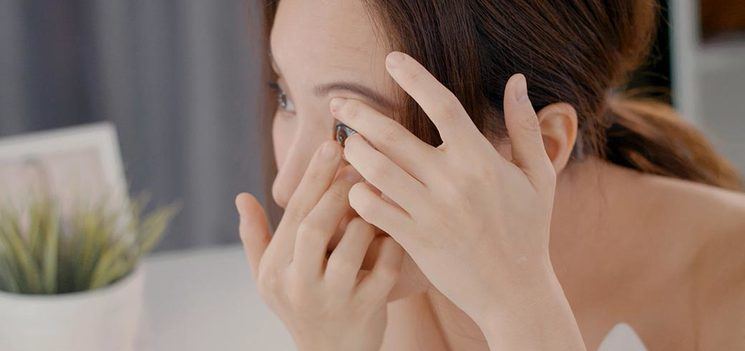Presbyopia
Gone are the days when presbyopia (or ‘lao hua’) is considered a condition experienced by ‘old’ people. As a condition that starts to develop in one’s 40s, most people in this age group will consider themselves young, active and on-the-go. So, what is presbyopia and how can you make sure it doesn’t slow you down? Read on to find out more.
What is Presbyopia?
Although it may sound like a serious condition, presbyopia is just a natural part of the aging process. Presbyopia is sometimes confused with hyperopia (also known as long- or farsightedness), but the two are different. Hyperopia can affect people of any age and is related to a misshaped eyeball that causes light rays to focus incorrectly at the back of the eye. Presbyopia, on the other hand, happens when the natural lens in the eye becomes less flexible. Contrary to many advertisements online, no eye exercises or supplements can prevent this from happening.
Early symptoms include:
- Needing to take your spectacles off to read (if you are myopic).
- Taking more time to adjust to looking at something close up after looking at something in the distance Needing to hold reading material at arm's length.
- Blurry vision at a normal reading distance.
- Headaches or fatigue while doing close work.
How is Presbyopia diagnosed?
Your Eye Care Professional can diagnose presbyopia with a thorough eye check, which typically includes:
- Professional consultation
- Refraction (checking vision and eye degree at distance and near)




How can presbyopia be treated?
Although there’s no cure for presbyopia, there are several options to correct your vision as it changes.
- Reading spectacles: Sometimes known as ‘magnifying specs’, these are generally helpful if you don’t have any existing significant visual problems. If you don’t belong in this category (for example, you have myopia), then you would need to switch back and forth between your distance and near prescription spectacles, depending on the task you’re doing.
- Bifocals: These are spectacles with a visible line midway through the lens, where the top section contains your distance prescription and the bottom section is for close work. This older technology is still useful for people with specific needs, for example those who want to maximize the reading space in their lenses or are unable to adapt to progressive lenses.
- Progressive lenses: This newer technology is similar to bifocals. However, there’s a gradual transition between the distance and reading prescriptions. In fact, progressive lenses often look like regular, single vision spectacles, and don’t give away that you have Presbyopia. It’s normal to have a short adaptation period to get used to these.
- Contact lenses: Some contact lenses are specifically designed to correct presbyopia, so you can enjoy your day-to-day activities as well as special occasions spectacle-free. Technology exists which takes into account the varying pupil sizes of different age groups to maximize clarity. Your Eye Care Professional can prescribe a tailored solution for you, depending on your needs.
- Surgery: There are some surgical procedures that could be considered to help correct presbyopia, but usually the vision correction options described above are prescribed first as they may provide everything you need without any permanent changes.
Finding the right Presbyopia solution for YOU
Remember that you can choose more than one vision correction option as an overall vision solution that best suits your lifestyle. Talk to your Eye Care Professional today about what you hope to achieve from your vision, so you can look, feel and see as young as you are at heart!














